Failure Analysis Market Size
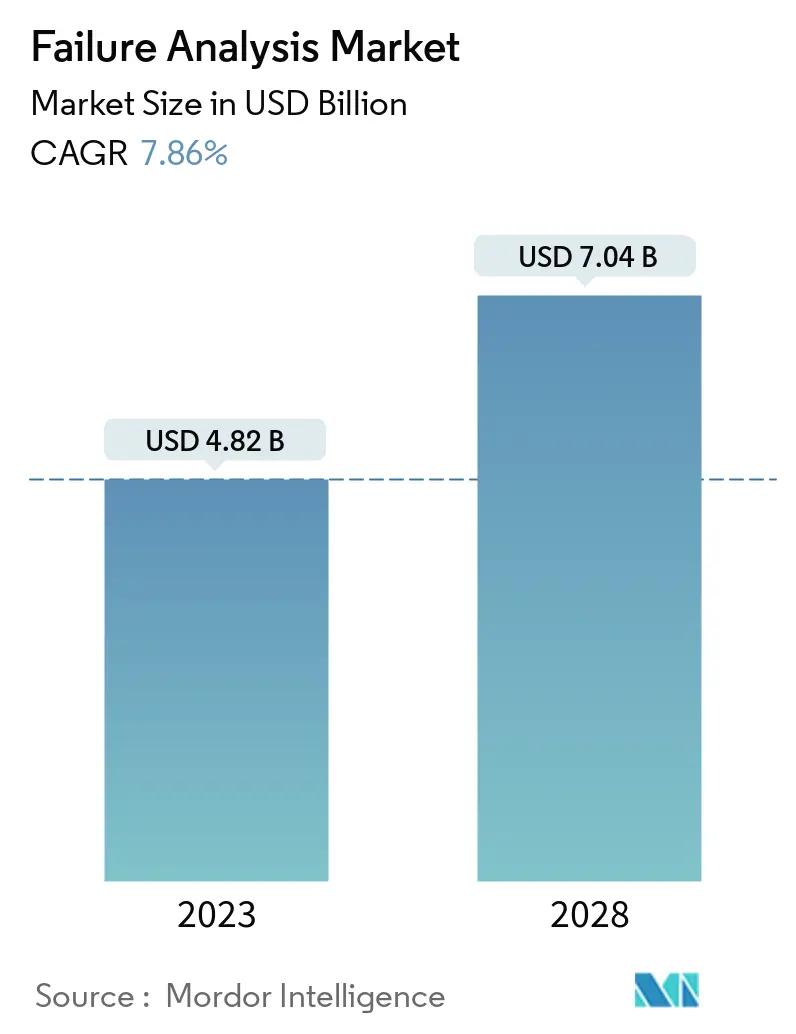
| Study Period | 2018 - 2028 |
| Market Size (2023) | USD 4.82 Billion |
| Market Size (2028) | USD 7.04 Billion |
| CAGR (2023 - 2028) | 7.86 % |
| Fastest Growing Market | Asia-Pacific |
| Largest Market | North America |
Major Players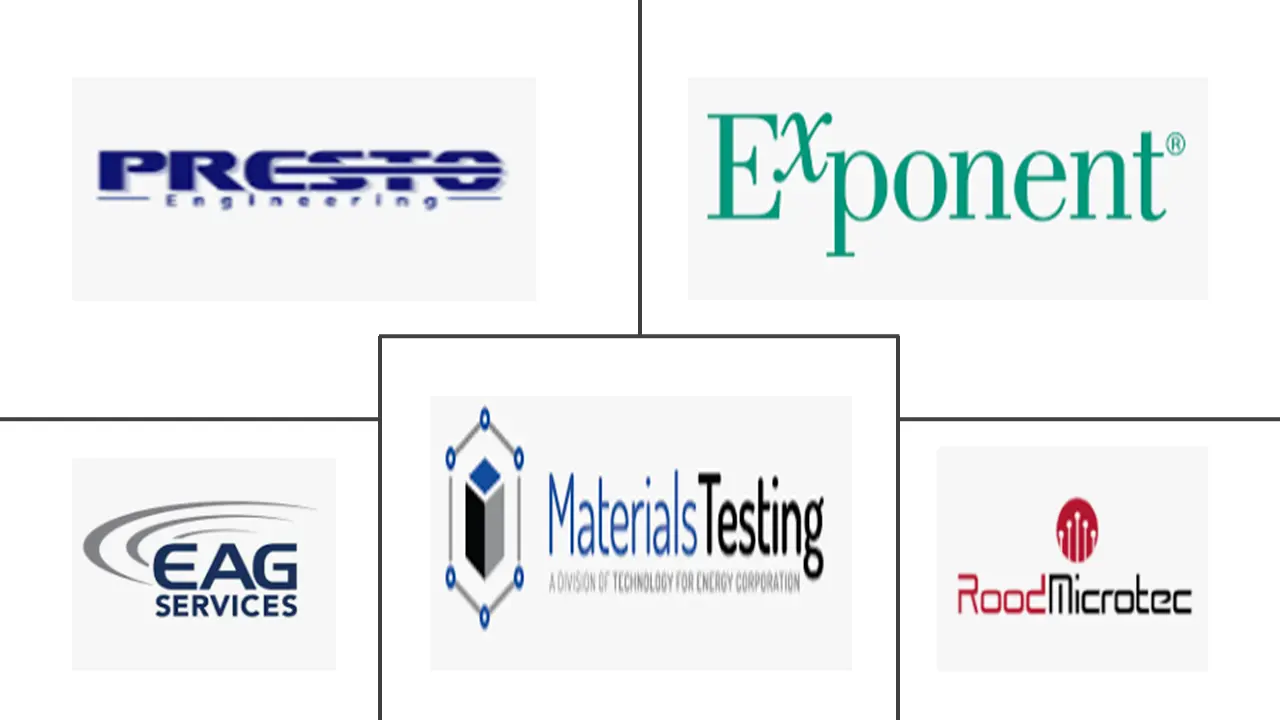
*Disclaimer: Major Players sorted in no particular order |
Need a report that reflects how COVID-19 has impacted this market and its growth?
Failure Analysis Market Analysis
The Failure Analysis Market size is expected to grow from USD 4.82 billion in 2023 to USD 7.04 billion by 2028, at a CAGR of 7.86% during the forecast period (2023-2028).
The increasing requirement for failure analysis among automobile manufacturers, who also employ vision and AI-based analysis tools for performance analysis, dynamic vehicle studies, accident reconstruction, etc., is augmenting the market's growth.
- Failure analysis refers to gathering and analyzing data to determine the cause of failure and corrective actions or liability. It is crucial to understand the root cause of failure to prevent similar incidents in the future. Common causes include assembly error, misuse or abuse, fastener failure, inadequate maintenance, manufacturing defects, low-quality material, improper heat treatments, unforeseen operating conditions, design errors, insufficient quality assurance, inadequate environmental protection, and casting discontinuities.
- Automation across the end-user industries has fueled the development in the market studied. Companies developing batteries for electric vehicles, mobile phones, energy systems, and other systems rely on testing to enhance the output, creating a more efficient, cleaner, and safer energy source. Companies use electron microscopy technologies to understand structures that level down at the atomic scale. They also use spectroscopy tools to discover critical changes in materials that cause defects and inefficiency.
- Several solution providers are innovating to provide effective and advanced failure analysis solutions in the industry. For instance, in February 2021, SGS announced an investment in Secondary ION Mass Spectrometry equipment at its Fujairah laboratory to test marine fuels for various chemical species, suggesting the contamination of the fuel with chemical waste components. One area where failure analysis is used extensively is finding the cause of vehicular accidents. Private and commercial vehicle accidents can result in severe property damage, bodily injury, and even loss of life.
- The outbreak of COVID-19 significantly disrupted the supply chain and production of semiconductors and electronic devices in the initial phase of 2020. For circuits and chipmakers, the impact was more severe. Due to labor shortages, many packages and testing plants in the Asia-Pacific reduced or even suspended their operations. This created a bottleneck for companies that depended on failure analysis of these devices.
Failure Analysis Market Trends
This section covers the major market trends shaping the Failure Analysis Market according to our research experts:
Automotive Sector is Driving the Demand for Failure Analysis
- The automotive industry has constantly faced new challenges as the demand for inexpensive, high-quality components has repeatedly increased. Extreme diligence must be imparted to ensure that such components are designed and manufactured with sufficient quality to withstand various service environments.
- The automotive industry has witnessed rapid advancements in ADAS systems, connected vehicles, IoT devices, and smart sensors, which could prevent potential accidents due to malfunctioning of some of the vehicle's vital parts. According to a report published by the WHO in July 2021, approximately 1.3 million people lose their lives yearly due to road traffic crashes. Between 20 and 50 million more people suffer non-fatal injuries, with many incurring a disability due to their injury.
- Potential causes for automotive device failure may include product design, manufacturing processes, contamination of the source materials, product packaging, improper handling, and improper calibration. These factors have raised concerns over the quality of manufacturing automotive parts and the preventive measures that can be implemented to avoid such incidents.
- Recently, the Asia-Pacific witnessed considerable growth in the automotive industry due to the increasing demand for passenger and advanced vehicles. Passenger vehicles find increased usage due to population density in the region. Therefore, the growing production of passenger and luxury cars is driving the market's growth in the region.
- The automobile component may fail in different failure modes, causing severe accidents. Therefore, it is essential to identify the failure mode for which the automobile component fails more frequently.
- Failure analysis is also done to establish the cause of an accident. The analysis is employed to see which component in the automobile caused the accident.
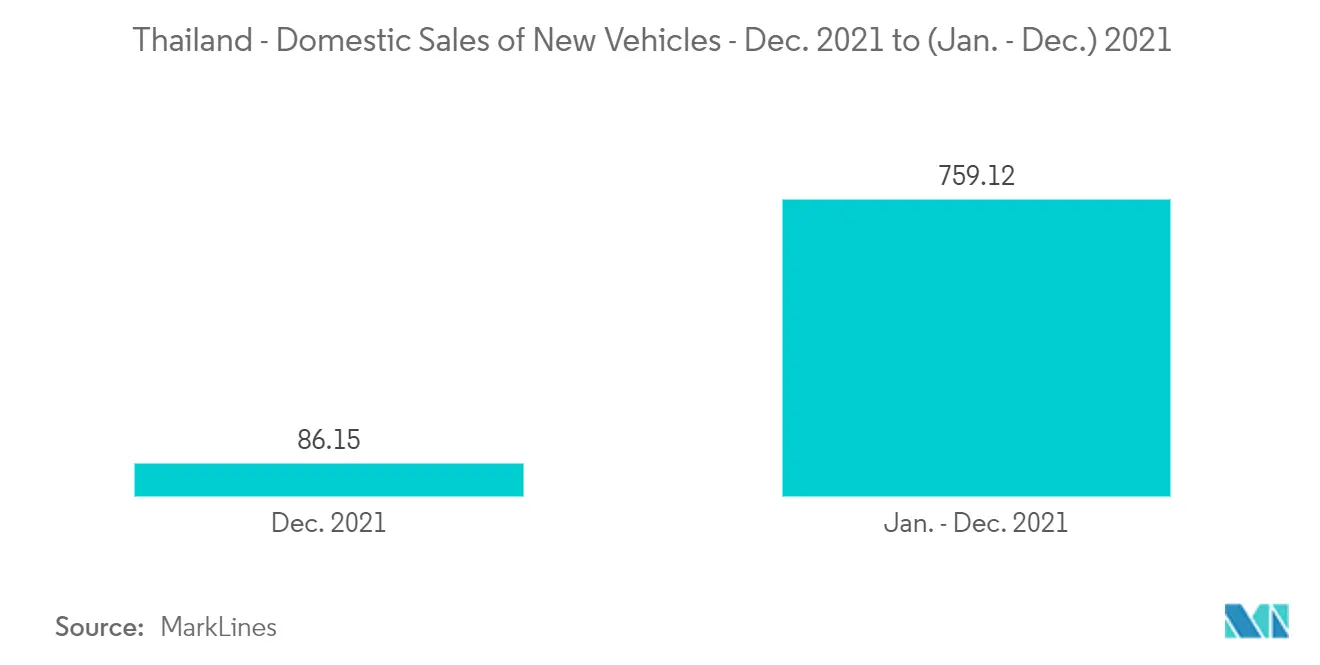
North America Occupies the Largest Market Share
- North America, majorly due to the United States, is one of the earliest adopters of failure analysis techniques, introduced originally to ensure no significant disruptions in the existing business models. The region is home to most of the prominent organizations in the world. For instance, the automotive sector in the country is ruled by General Motors and Ford, which rely heavily on automation.
- Furthermore, the United States is one of the leaders in crude oil production and has several oil rigs spread out across North America. The need for failure analysis techniques is being felt more acutely after the devastating effects of various oil rig accidents, the most notable being the Deepwater Horizon oil spill that occurred in 2010, discharging over 4.5 million barrels of oil into the sea due to a mechanical failure.
- The country has been witnessing critical infrastructure failures for the last few years. In 2021, significant pieces of US infrastructure, the Texas power grid, the East Coast’s main gasoline pipeline, and a freeway bridge over the Mississippi river, failed three times. The crises disrupted businesses and lives, cost billions, and led to the death of 150 Texans.
- To overhaul the US infrastructure, in November 2021, the Bipartisan Infrastructure Law (Infrastructure Investment and Jobs Act) was passed by Congress and signed into law by President Biden, seeking to invest significant investments in critical infrastructures. It emphasized on key sectors to modernize the country’s infrastructure landscape, including improving and rebuilding roads, public transit, bridges, ports, rail, and airports.
- Similarly, according to Statistics Canada 2021, Canada invested CAD 81.6 billion in infrastructure assets in 2020, continuing the investment trend of the previous four years. These investments are crucial to address the country’s infrastructure gap, the estimate of which ranges from USD 111 billion to USD 770 billion.
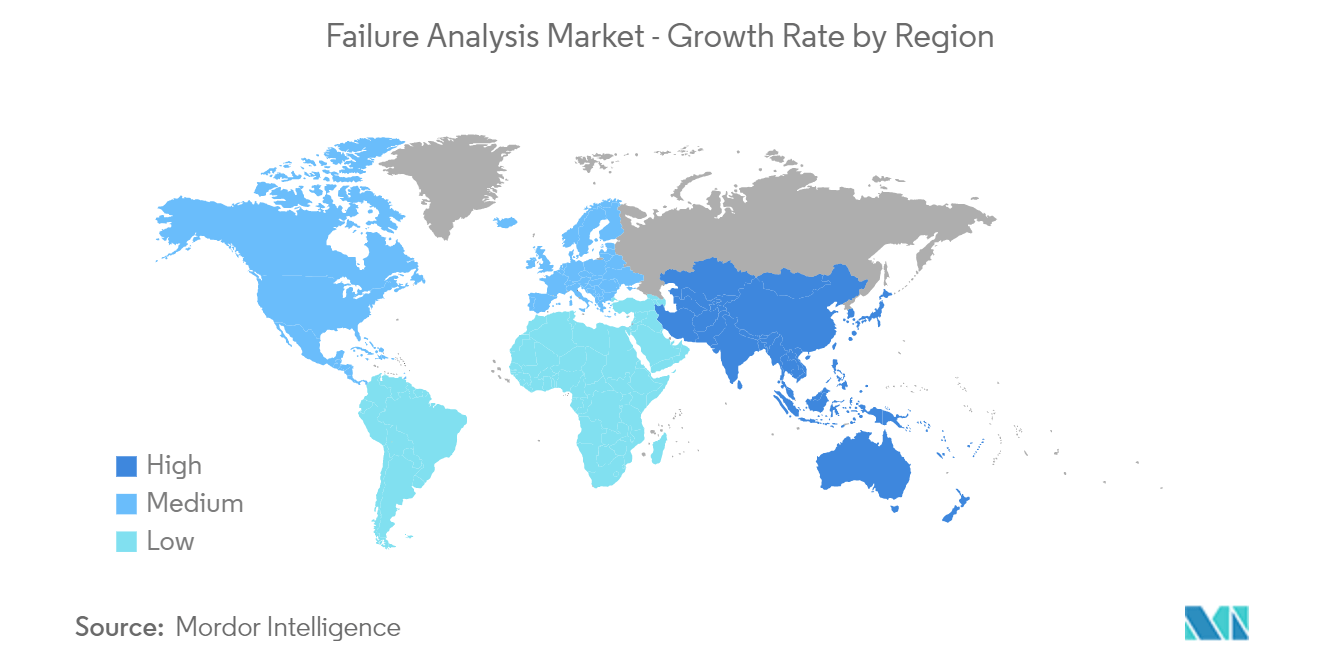
Failure Analysis Industry Overview
The Failure Analysis market is competitive and consists of several players. These major players with prominent shares in the market are focusing on expanding their operations to different verticals. Many companies leverage strategic collaborative initiatives to increase their market share and profitability. The companies operating in the market are also acquiring firms working on failure analysis to strengthen their product capabilities. Exponent Inc., Rood Microtec GmbH, and EAG Inc. are some major firms in the market.
According to RoodMicrotec NV, a prominent and independent semiconductor supply and quality services firm, in September 2021, the DAkkS accreditation was renewed for the Qualification & Failure Analysis operating unit at two locations of RoodMicrotec GmbH, Nördlingen and Stuttgart.
In September 2021, MASER Engineering, Europe's technologically leading failure and reliability testing facility, and Eurofins Scientific, an internationally recognized laboratory organization, agreed to sell their interests in MASER Engineering BV to Eurofins Scientific.
Failure Analysis Market Leaders
Exponent Inc.
TEC Materials Testing
EAG Inc.
Rood Microtec GmbH
Presto Engineering Inc.
*Disclaimer: Major Players sorted in no particular order
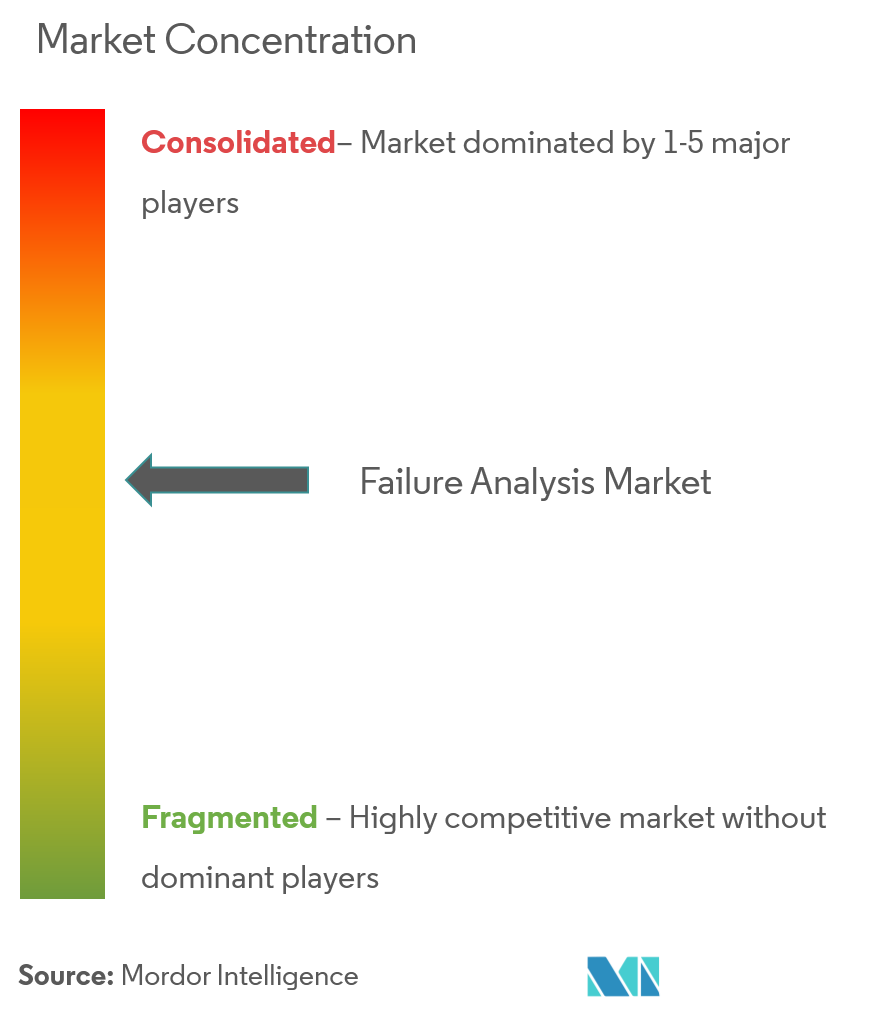
Failure Analysis Market News
- January 2022: AEM's Afore Wafer-Level Test Solutions' engineering team planned to install and exhibit the AIOLOS Wafer-Level Test Handlers at the RoodMicrotec facility in Nördlingen. This installation was part of a collaboration between RoodMicrotec NV, a leading independent company for semiconductor supply and quality services, and AEM, a global leader in semiconductor test and handling.
- January 2022: Mo., EAG Laboratories extended its medical device testing capabilities with a new 20,000-square-foot facility in St. Louis. The new laboratory was built specifically to meet the needs of the medical device sector. It aimed to improve EAG's analytical capabilities, provide faster turnaround times, and aid in meeting growing FDA and European Union's Medical Device Regulations criteria (MDR).
Failure Analysis Market Report - Table of Contents
1. INTRODUCTION
1.1 Study Assumptions And Market Definition
1.2 Scope Of The Study
2. RESEARCH METHODOLOGY
3. EXECUTIVE SUMMARY
4. MARKET DYNAMICS
4.1 Market Overview
4.2 Introduction To Market Drivers And Restraints
4.3 Market Drivers
4.3.1 Ageing Infrastructure and Increasing Need for Maintenance
4.3.2 Technological Advancements Drive the Market Growth
4.3.3 Innovation in Materials, Design, and Production Methods
4.4 Market Restraints
4.4.1 High Equipment Cost Challenge the Market
4.5 Industry Attractiveness - Porter's Five Forces Analysis
4.5.1 Threat of New Entrants
4.5.2 Bargaining Power of Buyers
4.5.3 Bargaining Power of Suppliers
4.5.4 Threat of Substitute Products
4.5.5 Intensity of Competitive Rivalry
4.6 Industry Value Chain Analysis
4.7 Assessment Of The Impact Of COVID-19 On The Market
5. TECHNOLOGY SNAPSHOTS ( TECHNIQUE)
5.1 Failure Modes Effect Analysis (FMEA)
5.1.1 Failure Modes, Effects, and Criticality Analysis (FMECA)
5.1.2 Functional Failure Analysis
5.1.3 Destructive Physical Analysis
5.1.4 Physics of Failure Analysis
5.1.5 Fault Tree Analysis(FTA)
5.1.6 Other Failure Mode Effect Analysis
6. MARKET SEGMENTATION
6.1 By Technology
6.1.1 Secondary ION Mass Spectrometry (SIMS)
6.1.2 Energy Dispersive X-ray Spectroscopy (EDX)
6.1.3 Chemical Mechanical Planarization (CMP)
6.1.4 Other Technology Types
6.2 By Equipment
6.2.1 Scanning Electron Microscope (SEM)
6.2.2 Focused Ion Beam (FIB) System
6.2.3 Transmission Electron Microscope (TEM)
6.2.4 Dual Beam System
6.3 By End-user Vertical
6.3.1 Automotive
6.3.2 Oil and Gas
6.3.3 Defense
6.3.4 Construction
6.3.5 Manufacturing
6.3.6 Other End-user Verticals
6.4 By Geography
6.4.1 North America
6.4.2 Europe
6.4.3 Asia-Pacific
6.4.4 Latin America
6.4.5 Middle East and Africa
7. COMPETITIVE LANDSCAPE
7.1 Company Profiles
7.1.1 Presto Engineering Inc.
7.1.2 TV SD Limited
7.1.3 Rood Microtec GmbH
7.1.4 EAG Inc.
7.1.5 MASER Engineering BV
7.1.6 NanoScope Services Ltd
7.1.7 CoreTest Technologies
7.1.8 TEC Materials Testing
7.1.9 McDowell Owens Engineering Inc.
7.1.10 Leonard C Quick & Associates Inc.
7.1.11 Crane Engineering
7.1.12 Exponent Inc.
- *List Not Exhaustive
8. INVESTMENT OUTLOOK
9. FUTURE OF THE MARKET
Failure Analysis Industry Segmentation
Failure analysis is the systematic investigation of a part's failure. It determines the root causes of the failure and the corrective actions needed to prevent future failures. The failure analysis techniques are used in various end-user verticals, such as automotive, oil and gas, and defense. The study analyzes the overall impact of COVID-19 on the market, and the same has been considered while arriving at the current market estimate and future projections.
The Failure Analysis market is segmented by technology (Secondary ION Mass Spectrometry (SIMS), Energy Dispersive X-ray Spectroscopy (EDX), Chemical Mechanical Planarization (CMP), and other technology types), equipment (Scanning Electron Microscope (SEM), Focused ION Beam (FIB) System, Transmission Electron Microscope (TEM), and Dual Beam System), end-user vertical (Automotive, Oil and Gas, Defense, Construction, Manufacturing, and other end-user verticals), and geography (North America, Europe, Asia-Pacific, Latin America, and Middle East and Africa).
The market sizes and forecasts are provided in terms of value (USD million) for all the above segments.
| By Technology | |
| Secondary ION Mass Spectrometry (SIMS) | |
| Energy Dispersive X-ray Spectroscopy (EDX) | |
| Chemical Mechanical Planarization (CMP) | |
| Other Technology Types |
| By Equipment | |
| Scanning Electron Microscope (SEM) | |
| Focused Ion Beam (FIB) System | |
| Transmission Electron Microscope (TEM) | |
| Dual Beam System |
| By End-user Vertical | |
| Automotive | |
| Oil and Gas | |
| Defense | |
| Construction | |
| Manufacturing | |
| Other End-user Verticals |
| By Geography | |
| North America | |
| Europe | |
| Asia-Pacific | |
| Latin America | |
| Middle East and Africa |
Failure Analysis Market Research FAQs
How big is the Failure Analysis Market?
The Failure Analysis Market size is expected to reach USD 4.82 billion in 2023 and grow at a CAGR of 7.86% to reach USD 7.04 billion by 2028.
What is the current Failure Analysis Market size?
In 2023, the Failure Analysis Market size is expected to reach USD 4.82 billion.
Who are the key players in Failure Analysis Market?
Exponent Inc., TEC Materials Testing, EAG Inc., Rood Microtec GmbH and Presto Engineering Inc. are the major companies operating in the Failure Analysis Market.
Which is the fastest growing region in Failure Analysis Market?
Asia-Pacific is estimated to grow at the highest CAGR over the forecast period (2023-2028).
Which region has the biggest share in Failure Analysis Market?
In 2023, the North America accounts for the largest market share in the Failure Analysis Market.
Failure Analysis Industry Report
Statistics for the 2023 Failure Analysis market share, size and revenue growth rate, created by Mordor Intelligence™ Industry Reports. Failure Analysis analysis includes a market forecast outlook to 2028 and historical overview. Get a sample of this industry analysis as a free report PDF download.
